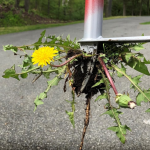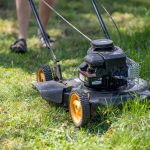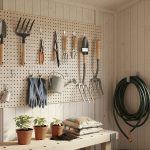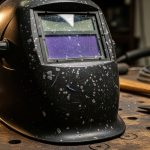From understanding the different types of welding, the right equipment to use, and the proper techniques to follow, our guide is a comprehensive resource. Whether you’re just starting out or you’re a seasoned pro, we are here to help you improve your skills and take your welding to the next level. Our goal is to help you achieve your welding goals, whether you’re looking to work professionally, build a welding project for your home, or just for personal satisfaction. So don’t wait, start your welding journey today and discover the limitless potential of this incredible skill!
Tips on How to Start Welding for Beginners
1. Choose and learn your preferred welding method
Different welding methods work best for different applications, so the first thing you need to decide to choose a welding process that is required for the job. Some require extensive training, but you can start with the easiest one and improve your welding process with time. The method you choose will be based on;
- Types of metals being welded
- The welding environment
- The nature of the final welds
- Your budget
What kind of welding to start with?
MIG welding is the easiest to start with, and it is the most common welding process for beginners. This method uses a welding wire to melt the metals that need to be fused together. Shielding gas or a flux core wire is required to protect the weld area from impurities, thus allowing the operator to create clean beads consistently. The skill is easy to learn, highly affordable, and can even be self-taught.

Stick welding, on the other hand, will require more skill and experience to learn but is also one of the most widely used welding processes. The process requires a stick electrode, so you do not require a wire feeder to lay welds. Stick welding doesn’t require a shielding gas, and it is best suited when working with rusty or dirty metals. Getting started with stick welding may have a wider learning curve, but it offers greater weld strength and quality.
TIG welding is ideal for welding thin metals that require high degree precision. It produces high-quality and clean welds, and it is considered one of the hardest processes to master, but it is not impossible to learn if you put in the required effort.
2. Get the welder
The welder is the biggest investment, especially if you are just starting your welding career. MIG welder is the most commonly used machine due to its affordability, ease of use, and ability to weld different materials. When choosing a welder for home-based DIY projects, it is recommended to go with one that will go with your standard household current.
3. Consumables
Besides the welder, you’ll need to get the consumables you need to start welding. This refers to the wire, electrode, or filler metals used in the welding process. The consumables will depend on the welding process and the materials you’re working with. You’ll also need to decide on the shielding gas combination that will work for your projects. In most applications, you’re going to need 75/25 CO2, an argon gas mixture, and a solid wire to make welds. Gas welding produces less spatter, but you’ll need to carry a tank of gas with you. If you don’t want the hassle of carrying the shielding gas, you can opt for gasless welding that uses a flux core wire to protect the welds from contamination.
4. Safety; wear proper PPE
Before anything else, our safety should always come first. Ensure you have the right welding gear, including an approved welding cap, fire-resistant welding shirt, welding gloves, welding jackets, welding glasses, and proper footwear. Ensure the area is well-ventilated and remove any flammable material to prevent fire accidents. You’ll also need a welding respirator to protect your lungs from dangerous fumes and gases. Welding produces heavy fumes, so you’ll need enough ventilation when performing welding, or you can choose to weld outdoors.
5. Prepare your metals
The success or failure of your welding projects will largely depend on the pre-wedding preparations. It is important to prepare the surface of the materials you’re working on to get the desired results. A clean working environment is one of the best ways of ensuring that your welds are strong and free from impurities.
Ideally, you’ll need to remove any rust, dirt, or oil that may be present on your metals to enable you to get the best results. You can simply use a wire brush to clean the metals or an angle grinder to grind the edges of the metals that you need to join. Ensure you have different flap discs for cleaning and cutting purposes when preparing the materials for your welds.
6. Clamping your work
Before you start welding, it is important to support your workpieces to ensure that they don’t move around while working. You can use various clamps and fixtures to clamp your work securely to enable you to produce good welds. You’ll also want to establish a solid connection for the lead clamp. If you have a steel welding table, you can clamp it directly or on a designated part of your workpiece to hold your work in place.
7. Set your welder settings
Another critical aspect that you’ll need to consider is the recommended settings for your welder. Keep in mind that this will be influenced by the type of project you’re involved in. Also, the wire speed and voltage should be set according to the specific type of welder. The initial settings should serve as a starting point, which means you might need to slow down or speed up the wire once you start welding. Also, you may be required to increase or decrease the voltage settings depending on the thickness of materials being welded and other outside factors such as the wire diameter and shielding gas combination.
8. The actual welding
Once everything is set according to specifications and all preparations made, you can now finally make your first weld. If you are doing MIG welding, load the wire according to instructions and attach your gas tank and regulator for the purpose of shielding your weld. Ensure there are no gas leaks by tightening or repairing the connection. Double-check everything and ensure that all settings are set correctly.
First off, you’ll need to practice tack weld your materials first. This involves placing the base materials at the weld joint before you lay the final bead. This may take practice, but with time you should start to notice some improvement in your bead appearance. You can get enough resources on how to improve your welding techniques online or undertake training at a technical school.
Performing your projects indoors away from the wind is highly recommended. This will ensure that the shielding gas is not blown away from the weld by strong wind currents. Alternatively, you can use a flux core wire to weld in windy conditions, but this will deposit a lot of flux on the weld. Stick welding will also deposit slag on your workpiece, but it can easily be removed with a hammer or slag chip. Ensure the welded area is cool enough before you try to remove the slag.
9. Practice makes perfect
Doing a practice run before you do the actually is a great way of sharpening your welding skills and discovering various DIY projects that are available for you. The objective is to help you master the technique and remain in control at all times. It also enables you to establish a good posture that will allow you to make the passes without straining. It also helps improve the weld quality substantially while helping you establish a routine when you begin to make the actual passes. You can start by practicing on scrap pieces of metal before moving to your welding projects. Practice until you feel comfortable and ready to undertake your projects.
10. Grinding
If the look of the final weld is critical, you’ll want to improve the appearance once the weld puddle has cooled down. Grinding is the simplest way to go about it, so ensure you at least have a small angle grinder or bench grinder to get you started. Always choose the right wheel on your angle grinder to make light passes over the weld. If you go too fast or grind too hard, you might chip off the weld, and this might force you to start all over again.
Final Verdict
Welding is amazingly easy to pick as long you have the right tools and adequate knowledge. It might take time to grasp the knowledge and gather enough experience to handle more complex, but with patience, anyone can learn the art of welding. Beginners can start with small to medium-sized projects before advancing to more complex and delicate ones. Keep in mind that this is not something that will happen overnight. The time and costs involved can seem overwhelming, but the good news is there are tons of entry-level welding equipment that will cost you just a few bucks.
Amranul is a highly experienced product review writer with a passion for helping readers make smart, informed purchasing decisions. Since 2018, he has specialized in thoroughly researching and analyzing a wide range of products to deliver honest, in-depth reviews. Amranul combines technical accuracy with clear, engaging writing to break down complex product features and highlight true user value. Look for his reviews to find reliable information and expert insights you can trust before you buy!





